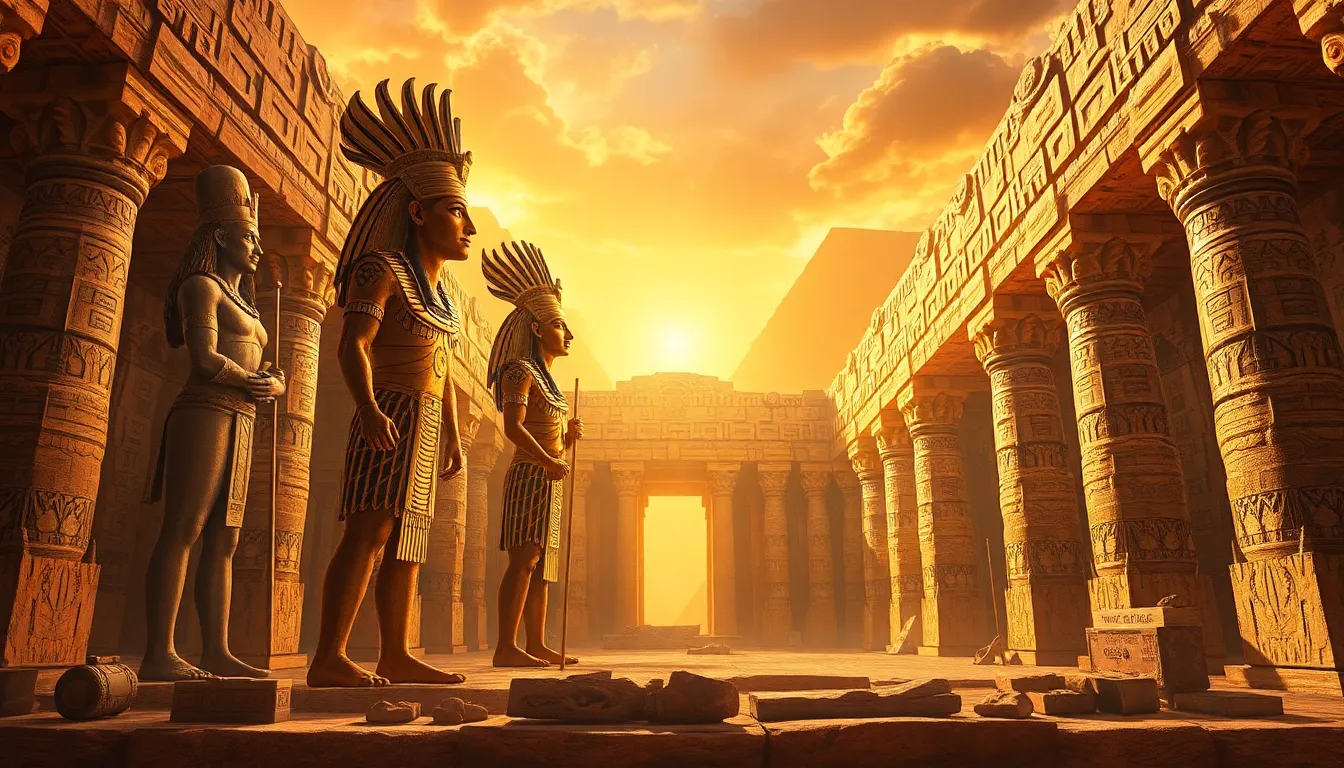The Role of the Afterlife in Ancient Egyptian Society
I. Introduction
Ancient Egyptian civilization is renowned for its rich tapestry of beliefs and practices, particularly surrounding the afterlife. Central to their religion and culture was the concept of life after death, which significantly influenced their daily lives, governance, and social structures. This article explores the multifaceted role of the afterlife in Ancient Egyptian society, examining its historical context, religious significance, and cultural manifestations.
II. Historical Context of Afterlife Beliefs
The beliefs surrounding the afterlife evolved considerably throughout Ancient Egyptian history, particularly across different dynasties. Initially, the afterlife was perceived as a shadowy continuation of earthly life, but as time progressed, concepts became more complex and elaborate.
- Old Kingdom: The focus was on the preservation of the body and the importance of funerary rites.
- Middle Kingdom: The notion of judgment and the weighing of the heart emerged, emphasizing moral conduct.
- New Kingdom: The afterlife became more accessible to common people, and elaborate texts like the Book of the Dead gained prominence.
Key texts such as the Pyramid Texts and the Book of the Dead provide invaluable insights into these beliefs, detailing the journey to the afterlife and the necessary rituals. Furthermore, the interaction with neighboring cultures, such as the Nubians and Mesopotamians, played a role in shaping their afterlife concepts.
III. The Concept of Ma’at and Cosmic Order
At the heart of Ancient Egyptian thought was the concept of Ma’at, which represented truth, balance, and cosmic order. Ma’at was not only a principle of justice but also a goddess who personified these ideals.
- Significance: Adherence to Ma’at was essential for societal harmony and individual morality.
- Influence on Afterlife: Those who lived in accordance with Ma’at were believed to have a favorable judgment in the afterlife.
The relationship between Ma’at and morality was crucial; the actions taken during one’s life would determine their fate in the afterlife, reinforcing ethical behavior and community values.
IV. The Journey to the Afterlife
The journey to the afterlife was fraught with challenges, beginning in the Duat, the Egyptian underworld. This realm was a place of both peril and potential, where the deceased navigated through various trials.
- Weighing of the Heart: Central to this journey was the weighing of the heart ceremony, where the heart of the deceased was weighed against the feather of Ma’at. A balanced scale indicated a worthy soul, while imbalance signified doom.
- Deities: Key deities such as Osiris, the god of the afterlife, and Anubis, the god of mummification and the protector of graves, played vital roles in guiding souls.
V. Funerary Practices and Burial Customs
The significance of funerary practices in Ancient Egypt cannot be overstated, as these rituals were believed to ensure a safe passage to the afterlife. Mummification was a critical process aimed at preserving the body for eternity.
- Mummification: This complex procedure involved the removal of organs, dehydration of the body, and wrapping in linen.
- Tomb Construction: Tombs were constructed with great care, often filled with grave goods, including food, jewelry, and tools, to accompany the deceased in the afterlife.
- Rituals: Various rituals, such as the Opening of the Mouth ceremony, were performed to bestow life upon the mummified body.
VI. The Afterlife as a Social Equalizer
One of the most profound aspects of Ancient Egyptian belief was the notion of equality in the afterlife. Regardless of one’s social status during life, the afterlife was viewed as a realm where all could potentially achieve peace and happiness.
- Commoners vs. Elites: While the elite had access to grand tombs and elaborate funerary practices, the belief in an equitable afterlife meant that common people were also afforded the same opportunities for eternal life.
- Communal Tombs: Many communities shared tombs, reinforcing the idea of collective memory and support in the afterlife.
VII. The Afterlife in Art and Literature
The representation of the afterlife in Ancient Egyptian art and literature is both rich and varied, offering insights into their beliefs and values.
- Art Depictions: Tomb paintings and carvings often illustrated scenes of the afterlife, depicting the deceased in a serene afterlife, engaged in activities reflective of their earthly lives.
- Literary Themes: Texts like the Book of the Dead contain spells and prayers to aid the deceased in their journey, emphasizing the importance of guidance and protection.
- Architectural Impact: The design of monumental structures like the pyramids was heavily influenced by afterlife beliefs, serving as grand gateways to the eternal realm.
VIII. Conclusion
The afterlife held immense significance in Ancient Egyptian society, shaping their cultural, religious, and social frameworks. From the evolution of afterlife beliefs to the intricate funerary practices and the universal quest for eternal life, these concepts have left an enduring legacy that continues to fascinate people today. As we reflect on the importance of the afterlife in Ancient Egyptian culture, we gain a deeper understanding of how these beliefs shaped their civilization and how they continue to influence modern perceptions of death and the afterlife.




